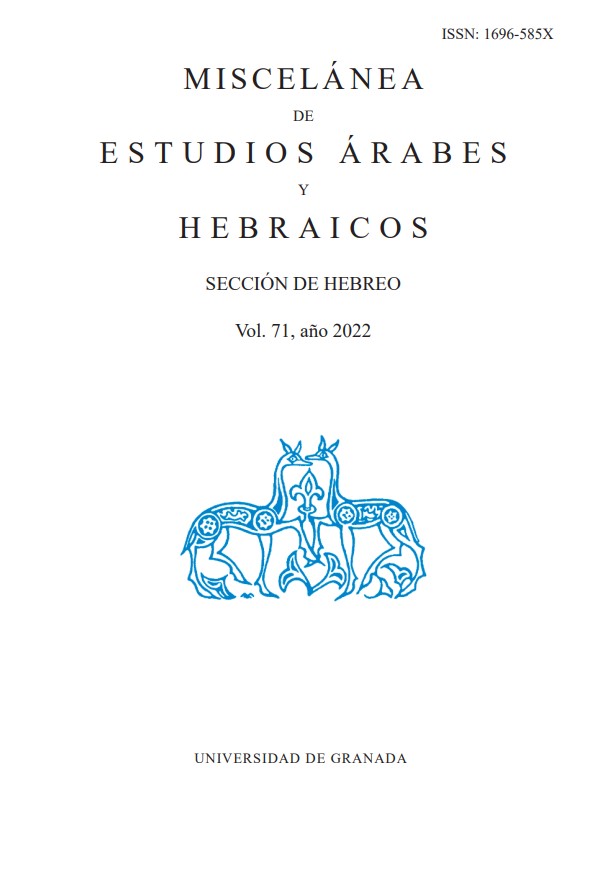On Love, Social Class and Death: The Literary Constants in the Romansos of Moiz Habib
DOI:
https://doi.org/10.30827/meahhebreo.v71.26333Keywords:
Moiz Habib, Ottoman Empire, Judeo-Spanish literature, romanso, novelAbstract
Abstract: there are few data we have about Moiz Habib, a 20th century author from Smyrna. Despite the fact that he possessed an axtensive production of more than a dozen works that came to light between 1921 and 1931, he only gained prominence in recent years thanks to the republication of some of his works from the fonds of Isräel S. Révah. The objective of these pages will be to shed light on the style developed by the autor and the topics that appear indissolubly in his romansos, or short novels, in Latin letters from his second stage (1931), such as love, the problem of belonging to a social class and death; the way in which his characters move between these spheres and the way in which the author justifies his actions.
Downloads
References
Barquín López, A. (1997), Edición y estudio de doce novelas aljamiadas sefardíes de principios del siglo XX. Leioa: Universidad del País Vasco.
― (1993), Una cala en la narrativa moderna sefardí: Notas sobre una docena de novelas cortas de principios de siglo. En Lorenzo Sanz, E. (Ed.), Proyección Histórica de España en sus tres culturas: Castilla y León, América y el Mediterráneo. Valladolid: Junta de Castilla y León, vol. II: 261-267.
Bornes-Varol, M. C. (2001), Israël S. Révah et la linguistique judéo-espagnole. En Méchoulan, H; Nahon, G. (Eds.), Memorial I.-S. Révah: Études sur le marranisme, l’hétérodoxie juive et Spinoza. Paris-Louvain: Peeters: 491-513.
Borovaya, O. (2012), Modern Ladino Culture. Press, Belles Lettres, and Theater in the Late Ottoman Empire. Bloomington: Indiana University Press.
Díaz-Mas, P. (1989), Influencias francesas en la literatura sefardí: estado de la cuestión. En Lafargue, F. (Ed.), Imágenes de Francia en las letras hispánicas. Barcelona: Promociones y Publicaciones Universitarias: 143-154.
García Arévalo, T. M. (2021), El Molino de Oro, de Moiz Habib (ed. Salónica). Breves Notas y Transcripción. Darom. Revista de Estudios Judíos 3: 81-105.
Gruss, S. (2020), Las novelas de Judá Haim Perahiá (Salónica 1886 —Xanthi 1970). Barcelona: Tirocinio.
Romero, E. (1992), La creación literaria en lengua sefardí. Madrid: Mapfre.
Sánchez-Pérez, M. (2019), El Quijote en judeoespañol. Estudio y edición de los fragmentos publicados en los periódicos sefardíes El Amigo de la Famiya (Constantinopla, 1881) y La Boz de Oriente (Estambul, 1931). Barcelona: Tirocinio.
Subaşı, D. F. (2018), Yildiz i sus sekretos. El Reyno de Abdul Hamid de Izak Gabay. Granada: EUG.
Ya’ari, A. (1934), Catalogue of Judeo-Spanish Books in the Jewish National and University Library of Jerusalem, Jerusalem, Hebrew University [en hebreo].
Published
How to Cite
Issue
Section
License

Este obra está bajo una licencia de Creative Commons Reconocimiento-NoComercial 4.0 Internacional.












